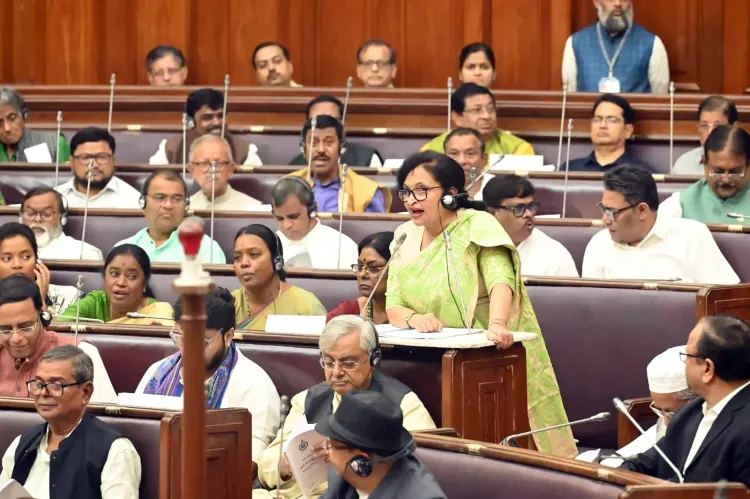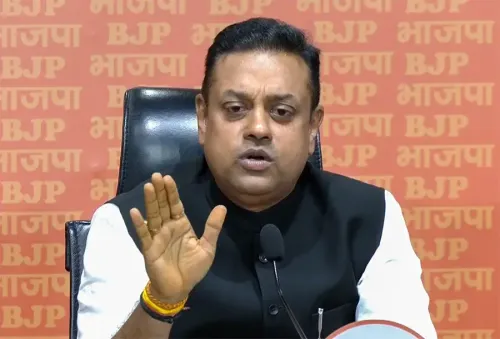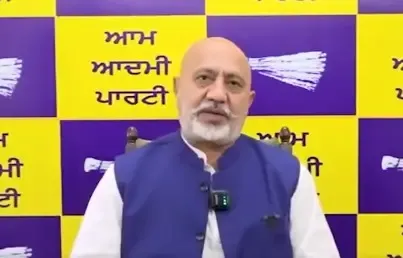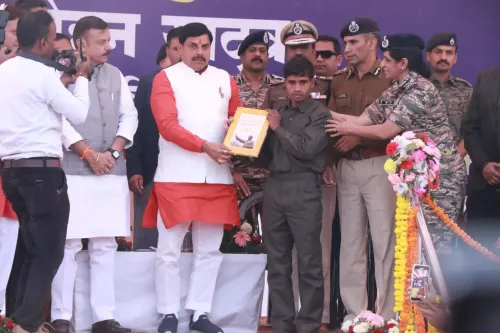Bengal Budget 2025-26: State to Conclude Fiscal Year with Rs 7.72 Lakh Crore in Debt

Synopsis
Key Takeaways
- Accumulated debt projected at Rs 7.72 lakh crore.
- Debt repayment for 2025-26 estimated at Rs 32,732.08 crore.
- Revenue deficit expected to reach Rs 35,314.95 crore.
- Fiscal deficit projected at Rs 73,177.96 crore.
- Concerns raised over expenditure management and interest payments.
Kolkata, Feb 12 (NationPress) The government of West Bengal is set to conclude the fiscal year 2025-26 with a total accumulated debt estimated at approximately Rs 7.72 lakh crore, as outlined in the state budget documents presented by Chandrima Bhattacharya, the minister of state for finance (independent charge), in the Assembly on Wednesday.
The budget estimates indicate that the total accumulated debt by March 31, 2026 will stand at Rs 7,71,670.41 crore, marking a 9.21 percent increase from the debt of Rs 6,30,783.50 recorded on March 31, 2025, according to the revised estimates for 2024-25.
Interestingly, at the conclusion of the financial year 2010-11, during the final year of the previous Left Front administration, the total debt was just over Rs 1.90 lakh crore.
The debt repayment amount for the fiscal year 2025-26 is projected to be Rs 32,732.08 crore, a slight increase from Rs 31,013.45 crore as per the revised estimates for 2024-25.
The estimated revenue deficit as of March 31, 2026 is expected to reach Rs 35,314.95 crore, while the fiscal deficit is projected at Rs 73,177.96 crore.
Economists suggest that such anticipated debt levels are unavoidable given the absence of substantial proposals aimed at enhancing the state's own tax revenue, coupled with significant revenue expenditures associated with various social welfare programs.
These two challenging factors, namely soaring revenue expenditures and constrained avenues for generating state tax revenue, are notably difficult to manage concurrently, according to experts.
They also point out that during the previous Left Front government, opportunities for increasing state tax revenue were limited, yet that administration managed to balance these limited resources by curtailing revenue expenditures.
The shortcomings in debt management by the West Bengal government have also been highlighted in the recent report by NITI Aayog titled “Fiscal Health Index: 2025,” particularly regarding the ratio of interest payments to total revenue receipts.
According to the report, while examining the fiscal year 2022-23, West Bengal's debt as a percentage of Gross State Domestic Product (GSDP) has decreased from 40.7 percent in 2010-11 to 35.7 percent in 2018-19, the last year of the previous Left Front government. However, the primary concern for the state is the interest payment on the accumulated debt.
"Interest payments constitute 20.47 percent of revenue receipts this year, limiting the state's capacity to allocate funds for development," the report stated.
The same report also raised concerns about the expenditure management by the West Bengal government. It noted that capital expenditure as a percentage of total expenditure has decreased from 12.2 percent in 2018-19 to 8.3 percent in 2022-23, which is below the national average.
Although the proportion of social expenditure in total expenditure has been relatively higher in West Bengal at 28.2 percent during the reviewed fiscal year, this figure is still lower than the national average, as highlighted in the report.










